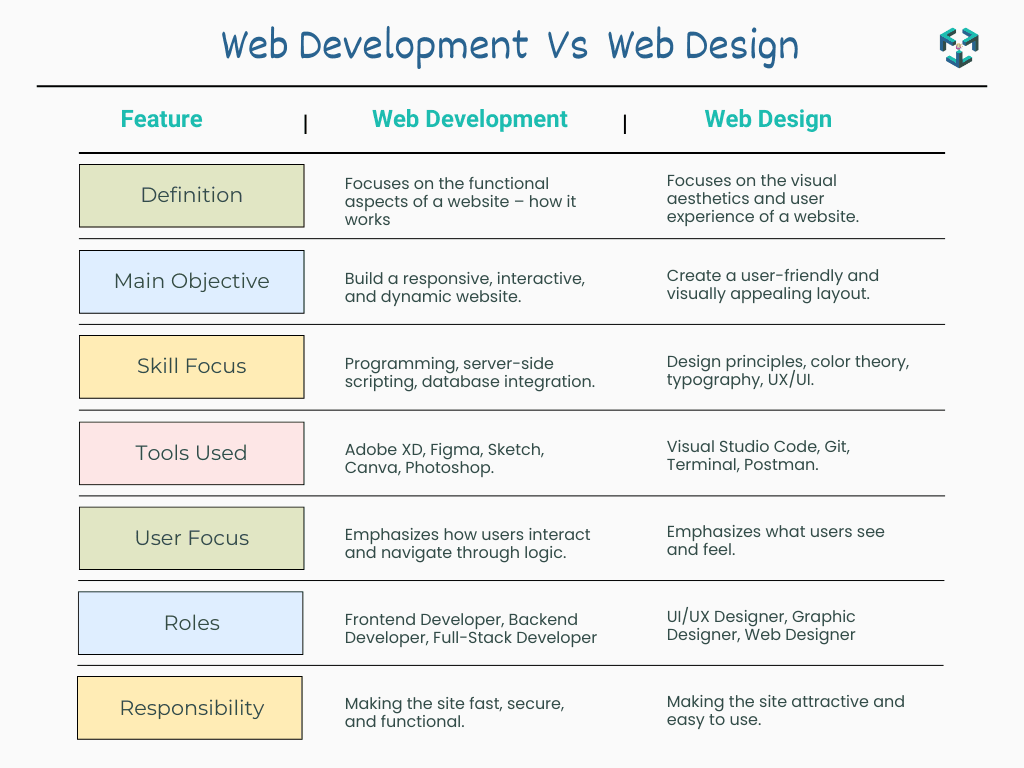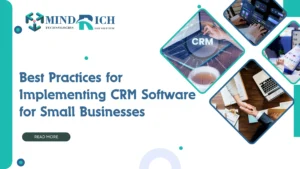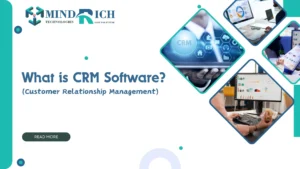In the modern world, having an internet presence is very crucial. Whether you are a startup, an enterprise, or a personal brand, your online presence is often the first point of interaction with potential clients or users. Thus, web development plays a very important part in the business and communication of the present day.
This comprehensive guide explores web development in detail, from its necessity to its future scope. We’ll cover the different types of web development, popular frameworks, the development process, required skills and technologies, and even compare web development with web design.
What is Web Development?
The process of designing, building, and managing websites or web applications is known as web development. Aspects including network security configuration, site design, and web content creation are covered. Building a basic single-page website or creating complex web-based applications and social network services are examples of web development.
Why is Web Development Important?
- Establishing an Online Presence: A strong website serves as a company’s online identity. For prospective clients, it serves as their initial point of contact. Without having a website, companies risk putting themselves at a loss because they have a good line of customers.
- Enhances Credibility and Trust: Consumers expect professional-looking websites. A modern, user-friendly design with secure features helps build trust and shows that a business is legitimate and credible.
- Drives Business Growth: Generate leads, convert visitors into customers, and an e-commerce transaction can be driven through a website. User behavior can be easily tracked through an analytical program, and conversion rates can be optimized.
- Enhances Accessibility and Reach: Web development creates a world where businesses can showcase their goods or services anywhere and at any time. A website can be accessed outside of stores, accessible anytime and anywhere, enabling people not to be limited.
- Facilitates Customer Service and Engagement: Chatbots, contact forms, and FAQs provide real-time service support that enhances the customer-dealing experience. Users stay interested and encouraged to return to interactive websites.
- Cost-Effective Marketing Tool: Compared to traditional advertising, a website provides a more affordable and scalable way to promote services, showcase products, and communicate brand values.
- Customization and Scalability: Businesses can create features that are specific to their needs with custom web development. As the business grows, the website can be scaled to support more users and services.
Also Read: How to Prepare for the AI and The Future of Work?
Web Development vs Web Design

Types of Web Development
Web development can be broadly categorized into:
A. Front-end Development
Frontend focuses on the website interface that users may interact with. Technologies that are included in frontend Development:
- HTML, CSS, JavaScript
- Frameworks: React.js, Angular, Vue.js
B. Back-end Development
Focuses on server-side logic and integration. Common languages and tools for backend Development:
- Node.js, Python, PHP, Java, Ruby
- Frameworks: Django, Flask, Laravel, Express.js
C. Full Stack Development
Full-stack developers provide an end-to-end web solution by managing both front-end and back-end tasks.
D. Web Application Development
Focuses on creating interactive, data-driven applications like Gmail, Facebook, etc.
E. E-commerce Development
Specializes in developing online stores using platforms like Shopify, Magento, WooCommerce, etc.
Also Read: What is ERP(Enterprise Resource Planning): A Comprehensive Guide?
Classification Of Web Development
Front-end Development (Client-Side Development)
- Description: Focused on the visual components of the site or web application directly involved with interaction by the user.
- Technologies: HTML, CSS, JavaScript, frameworks like React, Angular
- Responsibilities:
- Creating user interfaces (UI)
- Responsive design
- Handling user interactions
- User experience enhancement
Back-end Development (Server-Side Development)
- Description: Deals with database interactions, server logic, authentication, and overall functionality behind the scenes.
- Technologies: Node.js, Python (Django/Flask), Ruby, Java, PHP.]
- Responsibilities:
- Managing server requests and responses
- Design and connectivity of database
- Implementing business logic
- Security assurance and performance optimization
Full-Stack Development
- Description: Focuses on optimizing websites for mobile devices to ensure seamless user experience on smartphones and tablets.
- Technologies: Responsive web design, media queries, mobile-first frameworks like Bootstrap.
Web Application Development
- Description: Involves building interactive applications accessible through web browsers.
- Types:
- Static Web Apps
- Dynamic Web Apps
- Single Page Applications (SPAs)
- Multi-Page Applications (MPAs)
E-Commerce Development
- Description: Concerned with creating online stores and marketplaces.
- Platforms: Shopify, WooCommerce, Magento, custom solutions with frameworks
- Features::
- Product catalog management
- Integrate shopping cart
- Payment gateway setup
- Order and inventory management
CMS-Based Development
- Description: Utilizes Content Management Systems (CMS) like WordPress, Drupal to build and manage websites.
- Use Cases: Blogs, company websites, news portals, e-commerce stores.
- Advantages::
- No need to code from scratch
- Makes it easier for non-technical individuals to handle content.
Enterprise Web Development
- Description: Builds complex, scalable, and secure systems for large organizations
- Technologies: Often use strong frameworks and microservices architecture
- Applications: ERP systems, HR portals, CRM systems, business intelligence platforms.
DevOps & Infrastructure
- Description: Not writing code for the site, but ensuring reliable hosting, deployment, scalability, and maintenance.
- Tools: AWS, Docker, Jenkins, Kubernetes, CI/CD pipelines.
Skills Required for Web Or Website Development
Popular Web Development Languages & Frameworks
Front-end Web Development
- React: A JavaScript library for building user interfaces.
- Angular: A full framework for building complex web applications.
- Vue.js: Lightweight, flexible, and easy to integrate.
Back-end Web Development
- Node.js: JavaScript runtime for server-side programming.
- Django: High-level Python framework for rapid development.
- Flask: Lightweight Python micro-framework.
- Laravel: Elegant PHP framework.
- Ruby on Rails: Convention-over-configuration approach.
Web Or Website Development Process

Future Scope of Development
Low code and No code Development:
With low-code and no-code platforms, the creation of websites and applications is now possible for non-technical users at the quickest rate. Although these tools will not replace developers, they will open new avenues of approach to development, leaving professionals with the more complex, custom work to manage.
Blockchain Application in Web Apps:
Blockchain is becoming more than just cryptocurrency. Web applications include it for transparent data handling, safe payments, and identity verification. Blockchain expertise will give web developers a competitive edge when creating decentralized app
Data privacy and cybersecurity:
Data security must be prioritized as cyber threats change. The future of web development will place a high priority on GDPR compliance, encryption, secure coding techniques, and ethical data handling. Developers must stay updated with security trends to protect user data and maintain trust.
Interactive Design and Motion User Interface:
A website’s success is based on the best user experience. Nowadays, motion UI is becoming popular. It consists of interactive components, animations, and dynamic transitions. The creation of aesthetically pleasing and user-friendly interfaces that increase user engagement and retention will remain the main focus of web developers and designers
Voice Search and Voice Interfaces:
With the growing use of voice assistants like Alexa, Siri, and Google Assistant, voice search optimization is becoming crucial. Web developers will need to modify the structure and accessibility of websites in order to meet a growing focus on voice-friendly interfaces and content.
Artificial intelligence and Machine learning:
Machine learning (ML) and artificial intelligence (AI) are being utilized more and more in web development to create smarter, customized user experiences.
Increasing Need for Web Developers:
Even with automation tools, there is still a growing need for qualified web developers. Professionals with knowledge of modern frameworks, cloud integration, API development, and responsive design will continue to be in great demand as businesses grow their online presence.
Final Thoughts
In this blog we have discussed about the web development roadmaps for beginners. Web development continues to be the foundation of the digital world, which gives users, creators, and businesses access to secure, scalable, and interactive solutions. In order to create innovative, safe, and engaging applications, developers must adapt to new trends like artificial intelligence (AI), Web 3.0, and edge computing. Understanding the tools, frameworks, and best practices is crucial for success whether you’re creating a straightforward website or a sophisticated enterprise system. With continuous learning, innovation, and adaptability, web developers can shape the future of the internet, delivering seamless digital experiences that meet evolving user needs and drive impactful business outcomes.
Also Read: What is Accounting Software? It’s Features, Benefits & More









